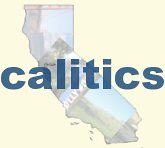SUPERTRAINS!
The President made some remarks about high speed rail today, and released a strategic plan for the development of high speed rail in America. Here, the President makes the case for rail:
But if we want to move from recovery to prosperity, then we have to do a little bit more. We also have to build a new foundation for our future growth. Today, our aging system of highways and byways, air routes and rail lines is hindering that growth. Our highways are clogged with traffic, costing us $80 billion a year in lost productivity and wasted fuel. Our airports are choked with increased loads. Some of you flew down here and you know what that was about. We're at the mercy of fluctuating gas prices all too often; we pump too many greenhouse gases into the air.
What we need, then, is a smart transportation system equal to the needs of the 21st century. A system that reduces travel times and increases mobility. A system that reduces congestion and boosts productivity. A system that reduces destructive emissions and creates jobs.
What we're talking about is a vision for high-speed rail in America. Imagine boarding a train in the center of a city. No racing to an airport and across a terminal, no delays, no sitting on the tarmac, no lost luggage, no taking off your shoes. (Laughter.) Imagine whisking through towns at speeds over 100 miles an hour, walking only a few steps to public transportation, and ending up just blocks from your destination. Imagine what a great project that would be to rebuild America.
Now, all of you know this is not some fanciful, pie-in-the-sky vision of the future. It is now. It is happening right now. It's been happening for decades. The problem is it's been happening elsewhere, not here.
The President clearly pushed for including HSR in the stimulus because he understands how important it is to bring some forward-looking infrastructure to America, a tangible show of what positive developments we can make with our tax dollars, a way to lower emissions, increase productivity, and improve quality of life.
It looks like there are two elements to the plan - improving existing infrastructure to increase speed on current rail lines, and building out new HSR lines throughout the country. And the President has committed $8 billion in the stimulus and an additional $1 billion per year to jump-start those efforts. If enough money can cover start-up costs, state governments and private investors would be more inclined to participate in the program, as their payoffs would potentially come quicker. Here's the map of the 10 major corridors that will be eligible for funding, along with the already-existent Northeast corridor:

I like that a key element of this in the strategic plan supports interconnected, livable communities. In a high-density area, a workable HSR system can bring new livable development in areas where it has not been, with new communities springing up around the rail line. This could happen anywhere along the 600 mile corridors seen as best for HSR.
Interconnected livable communities. Rail transport has generally been associated with “smart growth” because
it can foster higher-density development than has typically been associated with highways and airports. Rail is uniquely capable of providing both high-speed intercity transportation and its own efficient local access and egress system. For example, in the Boston region, Amtrak’s Acela serves two downtown stations connected to public transit – South Station and Back Bay – as well as a suburban station at Route 128. Yet just a few miles down the line to the west, Acela achieves speeds up to 130 miles per hour, and then 150 miles per hour.
Matthew Yglesias seems to think that upgrading the Northeast corridor would be the most promising use of the federal dollars, though as someone who's from that corridor, I can't see how upgrading what is already decent service can further these expansive goals more than bringing new corridors into play. Yes, these other lines will take time, but there is much that is already shovel-ready, at least in California, which is something that gets discounted a bit. Surveying and environmental studies employ people too, even without shovels.
We have spent a pitiful amount on rail over the last century, while Europe and Asia have built up their rail lines to the benefit of travelers, residents, businesses, and overall productivity. This is a green, clean solution to traffic and transportation that would really revolutionalize the way we get from point A to point B in America. I agree with President Obama's closing words:
"Make no little plans." That's what Daniel Burnham said in Chicago. I believe that about America: Make no little plans. So let's get to work. Thank you, everybody.
Labels: Barack Obama, energy, high speed rail, intercity rail, mass transit, transportation






<< Home